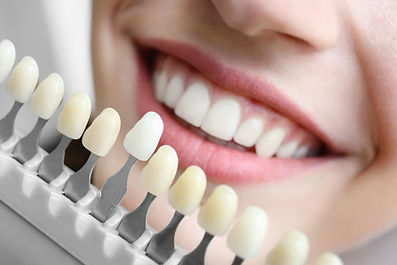



Conservative Dental Treatment
Bacteria formed due to food residue on teeth that are not brushed regularly cause tooth decay over time, causing melting of hard tooth tissues. Increasing sensitivity of teeth to hot and cold foods and pain due to other reasons are symptoms of tooth decay.
If tooth decay, which is usually noticed during a dental examination, is not intervened in time, the decay will spread to the tooth root and the tooth may be pulled out. By intervening as soon as possible to a tooth that has begun to decay, tooth loss as well as unbearable pain can be prevented.
For decayed teeth, the decayed areas are cleaned and this section is filled with special filling materials. In this way, the decayed part of the tooth is cleaned and it is ensured that it continues to function in a healthy way. If the treatment of the decayed area is late and the decay has progressed to the root of the tooth, first the nerves causing the decay and pain are cleaned with the root canal treatment method and the filling process is performed.
What is amalgam?
Amalgam fillings are also known as silver fillings. Amalgam; It is obtained by mixing silver, tin and copper alloy with mercury. Mercury, which makes up 45-50% of the mixture, binds the metals together, creating a durable filling material. Amalgam fillings, which have been developed and used for 150 years, have served to protect many teeth and keep them in the mouth.
Is mercury in amalgam harmful?
The mercury in amalgam fillings is not poisonous. When mercury combines with other metals, its chemical structure changes and it becomes harmless. The amount of mercury released in the mouth as a result of chewing and grinding is much smaller than the amount taken in water, air and food. All scientific research has concluded that mercury is harmless. Although it is claimed that some diseases thought to be caused by mercury are cured when amalgams are removed, it has not been scientifically proven.
Why do dentists prefer amalgam?
Amalgam is still the most harmless, longest lasting and cheapest filling material. It has been estimated that more than one billion amalgam fillings are made each year. They can be applied in a much shorter time and easier than other fillers. Filling materials such as porcelain, gold and white fillings are more expensive and require more time and attention. Additionally, anything other than gold is not as long-lasting as amalgam. Amalgam should not be used in those who are definitely allergic to mercury, which is much less likely than one percent. Amalgam fillings should not be removed when not necessary. Because it both brings unnecessary expense and increases the possibility of damaging the tooth.
Composite Filling
They are tooth-coloured fillings that are not noticeable on the tooth with various color options. Composite fillings, which were once used only in front teeth, have been strengthened by various methods and made suitable for back teeth as well. The filling material, which is bonded to the tooth using a special bonding agent, is hardened with a light device and can be polished in the same session.
Dental Fillings are treatments performed to ensure that teeth that have lost material due to decay are filled with various materials after the decay is cleaned, to ensure that the tooth fulfills its functions. Before the dental filling procedure, your doctor will apply local anesthesia if necessary. Drowsiness may last 2-6 hours. Although at a very low rate, the patient may develop a reaction to the material used. Soft tissue damage may occur during treatment. If you have any discomfort after the procedure (severe pain, food accumulation, sharp or rough area, height, etc.), please inform your physician. Pain or tenderness may occur after the procedure and may continue for a while. Following your doctor's recommendations after the treatment is completed will increase the success of the treatment. The success of fillings may vary depending on the structure of the tooth, the person's oral care habits and eating habits. 18 Depending on the damage to the teeth, your doctor will recommend one of the treatment and filling options explained below.
Porcelain Filling
Porcelain inlay-onlay fillings are fillings with superior aesthetics and durability prepared in the laboratory. For teeth requiring large fillings, inlay-onlay can be applied instead of composite or amalgam fillings, as they are both aesthetic and durable. With the CAD-CAM system, which is now called single-session dentistry, these fillings can be prepared in approximately 10 minutes.



How to do it?
The decayed or old restoration is cleaned and a cavity is created in the tooth and a measurement is taken from this cavity with an optical measurement system. This measurement is designed with a special program in the computer environment and the restoration is engraved from the block produced with high technology on a 3D printer. When it arrives, the polished porcelain filling is adhered to the cavity with special adhesives.
Porcelain fillings have been developed to protect healthy tooth tissue in cases where there is a lot of material loss and the entire tooth needs to be reduced in size and crown application. Since it is more aesthetic and useful, it is preferred instead of amalgam fillings.
They provide excellent aesthetics, edge compatibility and adaptation.
IPS porcelain (Leucide reinforced pressable porcelain) fillings
They are tissue-friendly fillings and are the materials with the highest biological compatibility.
In the porcelain filling method, healthy tooth tissue in the mouth is not touched. In addition, these porcelains are the materials closest to the hardness of the teeth and most compatible with the gums. Since its hardness is very close to the enamel tissue of the tooth, it does not wear out like composite fillings.
Especially in case of large material losses, composite filling or crown (covering) should be preferred instead.


